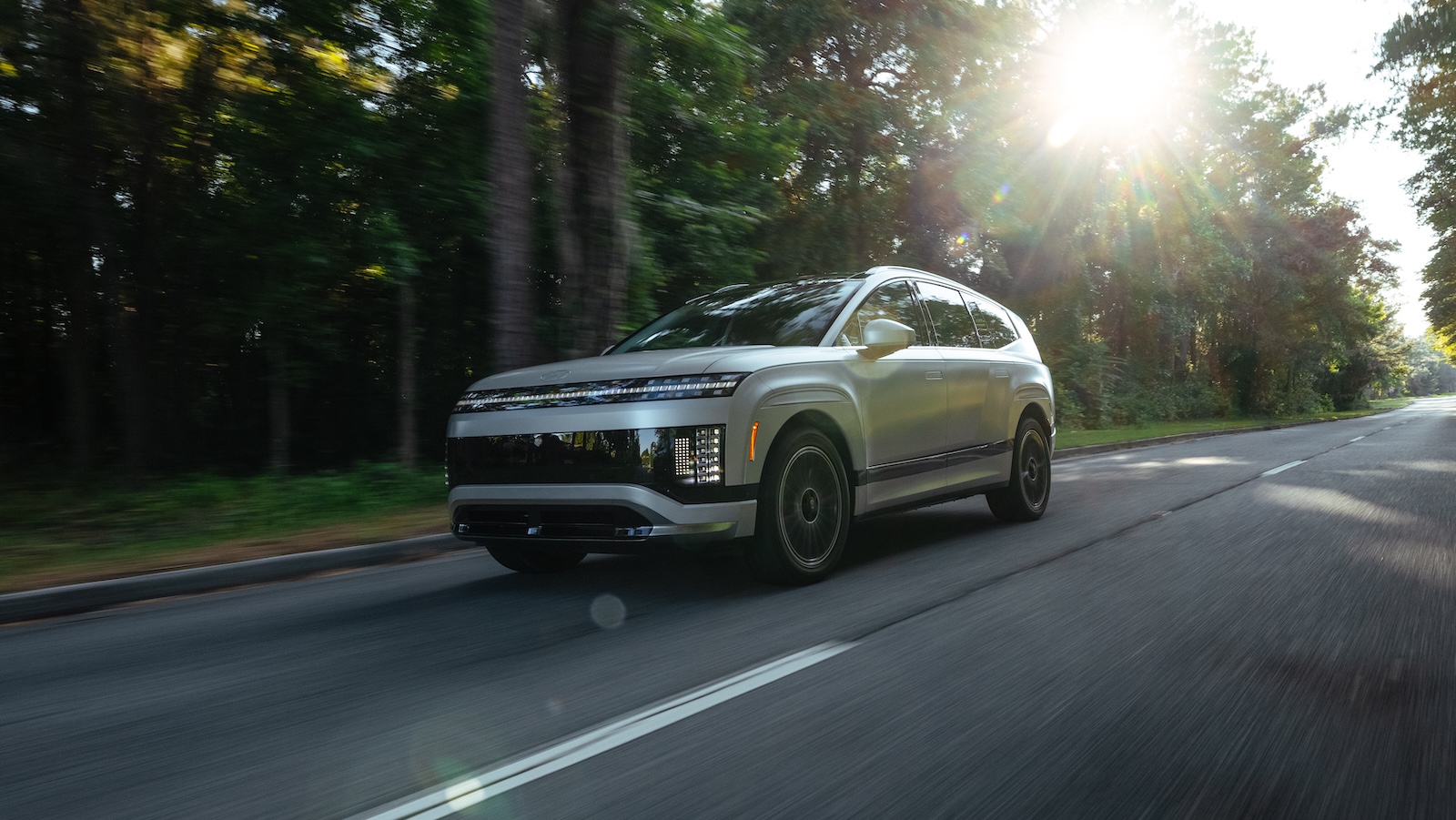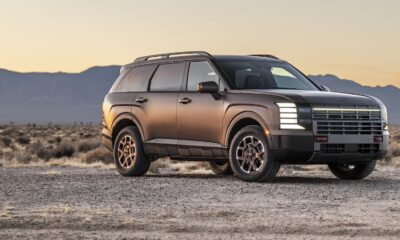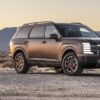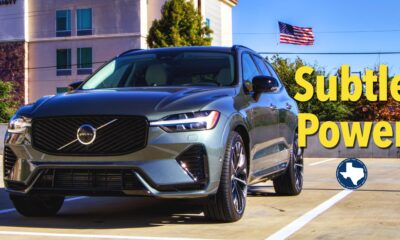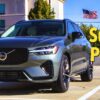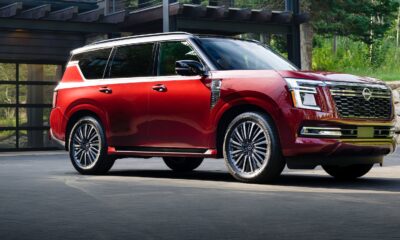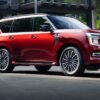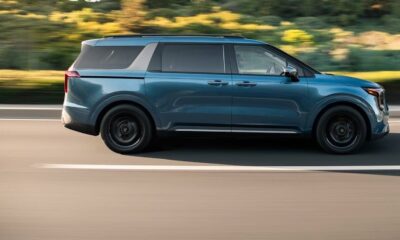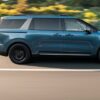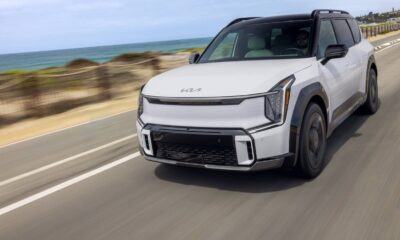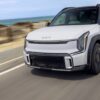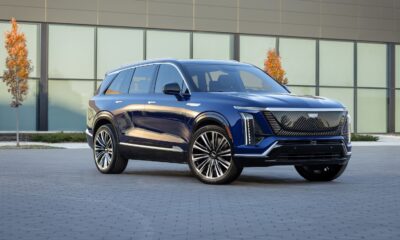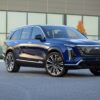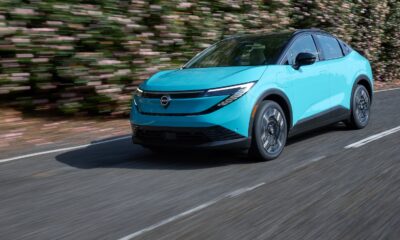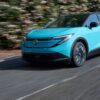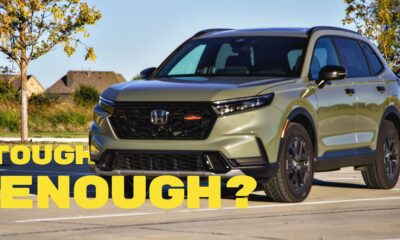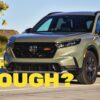Car Reviews
HYUNDAI’S IONIQ 9 CALLIGRAPHY – PLUGGED INN
HYUNDAI’S IONIQ 9 CALLIGRAPHY
PLUGGED INN
September 23, 2025 – There’s no need to rush. Despite Federal incentives for the purchase of new and pre-owned EVs expiring at the end of this month, initiatives to move the not-quite-moribund EV segment will likely continue – they simply won’t be funded by the Feds. In what may be described as the third phase of the EV initiative (Musk was there first, the legacy OEMs were second), the removal of Fed incentives coincides with a flattening of EV demand, but that shouldn’t be confused with no demand. The options have never been better, and a prime example of our expanded choices is Hyundai’s 3-row Ioniq 9.
The Ioniq 9 is the highly anticipated addition to Hyundai’s EV lineup, following the well-received Ioniq 5 hatch and the no-one-has-yet-noticed Ioniq 6 4-door sedan. Having that 3rd row is a big deal, at least on my street. Immediate neighbors boast minivans (Hondas and a Kia Carnival), but Hyundai’s new Santa Fe is parked around the corner, and you’ll see Toyota’s Grand Highlander just about everywhere. The 3-row EV is still relatively new, but Hyundai’s Ioniq 9 seems to have hit the ground humming.
Parked on the driveway I’m impressed by the Ioniq 9’s comparative subtlety. While the gas/hybrid Palisade 3-row has been dressed up for 2026, with more shiny bits and ornamentation (at one time I’d call it ‘pimped’), the Ioniq 9 exudes more of a Telluride vibe, the 3-row built by Hyundai’s corporate cousin, Kia. And while the 3-row EV is slightly bigger in every dimension relative to our benchmark – a ’23 Grand Cherokee – it doesn’t feel bigger, and is only marginally heavier (6,000 pounds for the Hyundai, 5,600 for the Grand Cherokee plug-in); in fact, it feels lighter, and is significantly more responsive.
That responsiveness emanates from our Calligraphy trim’s dual-motor powertrain, combining 211 horsepower in the front with – coincidentally! – 211 horsepower in the rear – and a range (according to Hyundai) of 311 miles. While you can calculate the combined hp, the combined torque is 516 lb-ft, which is more than enough when communicated to the tarmac via the Ioniq 9’s 285/45R-21 rubber. In Car and Driver testing the big Hyundai EV arrived at 60 in 4.4 seconds and was sitting at 100 (that’s triple digits, Partner…) in just 12 seconds. Like the majority of EVs I’ve tested, the down-the-road sensation is absolutely serene, a feeling underscored by the Ioniq 9’s composed ride and sure-footed handling.
Inside, that serenity continues with a conservatively designed environment placing an emphasis on convenience, in combination with a lack of stylistic fuss. Presumably only oil barrels were killed in the manufacture of the H-Tex seat trim, which is perforated. On those seat surfaces where you sit the trim is light gray, while those supporting your back are a dark gray. (With young kids I’d prefer the reverse to reduce soiling, but there’s always WeatherTech.) Hyundai continues to separate ventilation and audio controls from the large infotainment screen, and that – for the time being – keeps this old(er) guy happy.
Of course, in buying a 3-row ‘anything’ you’ll want room for your people and their stuff. Within those three rows the front buckets are generously proportioned, as are the second row Captain’s chairs. Access to the third row is easy, and once there it’s comfortable for anyone younger than 14, unless they’ve already committed to a Division 1 program. The roofline tapers slightly, and that’s gonna’ make it more difficult for those kids on a growth track.
With that third row up you’ll still have 22 cubic feet of cargo room, while folded you’ll enjoy 47 cubic feet. Put both rows down and you have 87 cubic feet behind the rear seats, making the Home Depot run not only doable…but expensive! This is a sport utility with the acceleration to deliver ‘sport’ and enough room to embrace ‘utility’.
If there’s a hitch it’s in the top-tier Calligraphy’s window sticker. With virtually everything standard except the Cyber Gray paint and floor mats, the base is just under $75K, and with the paint, mats and destination it’s just under $78K. That, of course, is a lot of coin…unless you’ve been shopping luxury pickups. For those watching their pennies, the base Ioniq 9 – with one motor, rear-wheel drive and 335 miles of claimed range – starts at under $60K.
If you can get a deal on a lease (and if you can’t now you’ll be able to soon), any version of Hyundai’s Ioniq 9 is viable. And if wanting to reduce your carbon footprint there are few choices better. But if your desire is to simply save money, investing $60K on a well-optioned Palisade probably makes more cents…



